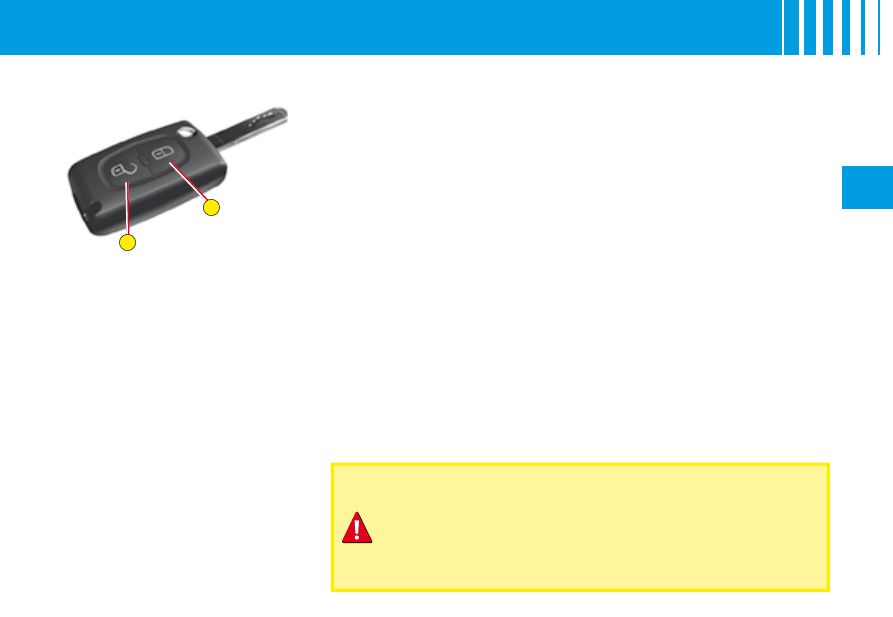Citroen C2 (2008 year). Instruction - part 1

B
A
II
19
R E M O T E C O N T R O L
Note: The simultaneous use of other
high frequency equipment (mobile
telephones, domestic alarms, etc.)
may momentarily hinder the opera-
tion of the remote control.
If there is a permanent fault, the
remote control has to be reini-
tialised. See "Changing remote
control batteries".
Central unlocking
A short press on control B unlocks your vehicle.
This operation is confi rmed by the rapid fl ashing of the direction indicators
and the lighting of the interior lamp (if the function is activated). It can also
deploy the exterior rear view mirrors.
Central locking – Deadlocking
A short press on button A locks your vehicle.
This is confi rmed by the lighting for around 2 seconds of the direction indica-
tors and by the interior lamp going out. It may cause the exterior rear view
mirrors to fold back.
If any of the doors, or the boot, is open or not properly closed, the central
locking does not operate.
For vehicles equipped with deadlocking, two successive presses on
control A will operate deadlocking. It is then impossible to open the doors,
either from the inside or from the outside.
It is dangerous to operate the deadlocking when a person
is in the vehicle as unlocking is impossible from the inside
(without the remote control).